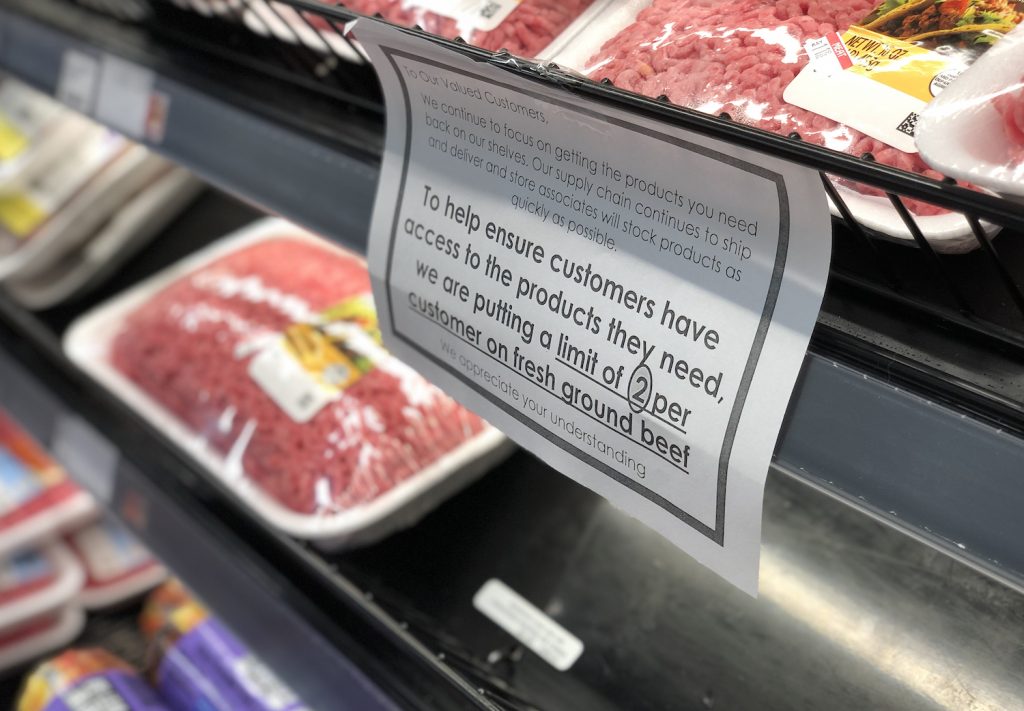Meat supply getting skinny in Central Ohio

In a normal world (aka ‘last year’) meat cases would be overflowing with beef, chicken, pork and sausages ready to be grilled, smoked and seared. We would have cleaned out our grills by now, ready to feed the procession of friends and family that begins to flow to our backyards and patios this time of year. This year will be very different.
Besides the limitation on travel and get-togethers, Central Ohioans are about to experience another consequence of the pandemic – one we are not at all familiar with – meat shortages.

The normally flush meat case at Costco was mostly filled with ground bison, previously frozen seafood and random pork cuts 

An empty meat case at a local Giant Eagle Saturday 
A few bulk packs of ground beef and two packages of steaks were about all the beef to be had at this local Kroger Saturday.
Depending on where you grocery shop you’ve probably noticed a thinning of the normally overflowing displays and cases of meat. For weeks now, you’ve also been reading national stories about an impending meat shortage caused by shuttered meat processing plants. The ‘meatpocalypse’ is now at out doorstep.
A weekend tour of local Costco, Giant Eagle and Kroger reflected the new reality – empty meat cases, purchase limits on customers and rising prices on what’s left. Beef products were in especially short supply with pork product selection thin as well. Chicken however, appeared to be abundant.
BROUGHT TO YOU BY
“We are about a week away from really seeing the shortages impact us,” said a Giant Eagle butcher who asked to remain anonymous. “Right now we’re low because people have been reading the news stories and have been stocking up and hoarding the stuff,” he said.
Both Tyson and Smithfield Foods have closed several plants as a result of COVID-19 outbreaks at the plants. Experts say the country’s meat supply chain will likely linger as long as the pandemic does.
It’s even impacting Dublin, OH based Wendy’s as a reported 10% of their national stores have already taken beef off the menu, serving only chicken.
“This is the first time I’ve seen this,” said John D’Andrea, regional sales manager for Blue Ribbon Meats.
D’Andrea, who has been in the meat supply business for 42 years, says higher end restaurants will be most impacted as certain cuts of meat are simply not available and those that are in stock are fetching much higher prices.
“They shut down the slaughterhouses [due to COVID-19 breakouts] and really backed things up big time,” said D’Andrea.
But he says the crisis is temporary and beef supplies should rise as the processing plants have begun to restart and are now back to 30% capacity.
“I think this is going to last four to six weeks, minimum and then you’ll see moderate price increases at the end of it,” said D’Andrea.
BROUGHT TO YOU BY





